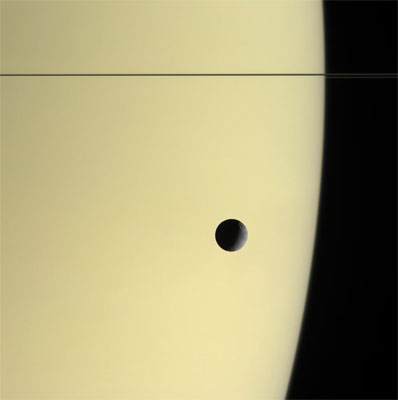
Spaceflight Now +

|

|

|

|

Premium video content for our Spaceflight Now Plus subscribers.

First satellite repair
 The mission for the crew of space shuttle Challenger's April 1984 flight was two-fold -- deploy the experiment-laden Long Duration Exposure Facility (LDEF) and then track down the crippled Solar Max spacecraft, capture it and perform repairs during spacewalks. Initial attempts by the astronauts to grab the craft while wearing the Manned Maneuvering Unit spacewalk backpacks failed, but the crew ultimately retrieved Solar Max and installed fresh equipment while it was anchored in the payload bay. The crew narrates this post-flight presentation of home movies and highlights from mission STS-41C. The mission for the crew of space shuttle Challenger's April 1984 flight was two-fold -- deploy the experiment-laden Long Duration Exposure Facility (LDEF) and then track down the crippled Solar Max spacecraft, capture it and perform repairs during spacewalks. Initial attempts by the astronauts to grab the craft while wearing the Manned Maneuvering Unit spacewalk backpacks failed, but the crew ultimately retrieved Solar Max and installed fresh equipment while it was anchored in the payload bay. The crew narrates this post-flight presentation of home movies and highlights from mission STS-41C.

 Small | Medium | Large Small | Medium | Large

STS-26: Back in space
 The space shuttle program was grounded for 32 months in the painful wake of the 1986 Challenger accident. Americans finally returned to space in September 1988 when shuttle Discovery safely launched for its mission to deploy a NASA communications satellite. Enjoy this post-flight presentation narrated by the astronauts as they show movies and tell the story of the STS-26 mission. The space shuttle program was grounded for 32 months in the painful wake of the 1986 Challenger accident. Americans finally returned to space in September 1988 when shuttle Discovery safely launched for its mission to deploy a NASA communications satellite. Enjoy this post-flight presentation narrated by the astronauts as they show movies and tell the story of the STS-26 mission.

 Small | Medium | Large Small | Medium | Large

Amazing STS-51I flight
 Imagine a space shuttle mission in which the astronaut crew launched two commercial and one military communications spacecraft, then conducted a pair of incredible spacewalks to recover, fix and redeploy a satellite that malfunctioned just four months earlier. The rescue mission was a success, starting with an astronaut making a catch of the spinning satellite with just his gloved-hand. Enjoy this post-flight presentation narrated by the astronauts as they tell the story of shuttle Discovery's August 1985 mission known as STS-51I. Imagine a space shuttle mission in which the astronaut crew launched two commercial and one military communications spacecraft, then conducted a pair of incredible spacewalks to recover, fix and redeploy a satellite that malfunctioned just four months earlier. The rescue mission was a success, starting with an astronaut making a catch of the spinning satellite with just his gloved-hand. Enjoy this post-flight presentation narrated by the astronauts as they tell the story of shuttle Discovery's August 1985 mission known as STS-51I.

 Small | Medium | Large Small | Medium | Large

Science of New Horizons
 The first robotic space mission to visit the distant planet Pluto and frozen objects in the Kuiper Belt is explained by the project's managers and scientists in this NASA news conference from the agency's Washington headquarters on Dec. 19. The first robotic space mission to visit the distant planet Pluto and frozen objects in the Kuiper Belt is explained by the project's managers and scientists in this NASA news conference from the agency's Washington headquarters on Dec. 19.

 Dial-up | Broadband Dial-up | Broadband

 Become a subscriber Become a subscriber
 More video More video

|

|

|

|
|

|

Adrift at Saturn
CASSINI PHOTO RELEASE
Posted: January 6, 2006

Credit: NASA/JPL/Space Science Institute
Download larger image version here
|
Tethys floats before the massive, golden-hued globe of Saturn in this natural color view. The thin, dark line of the rings curves around the horizon at top.
Visible on Tethys (1,071 kilometers, or 665 miles across) are the craters Odysseus (top) and Melanthius (bottom). The view looks toward the anti-Saturn side of Tethys.
Images taken using red, green and blue spectral filters were combined to create this color view. Tethys is apparently darker than Saturn at these wavelengths. The edge of the planet appears fuzzy, which may indicate that we are seeing haze layers that are separated from the main cloud deck.
The images were acquired by the Cassini spacecraft narrow-angle camera at a distance of approximately 2.5 million kilometers (1.6 million miles) from Saturn. The image scale is 15 kilometers (9 miles) per pixel on Saturn and 13 kilometers (8 miles) per pixel on Tethys.
The Cassini-Huygens mission is a cooperative project of NASA, the European Space Agency and the Italian Space Agency. The Jet Propulsion Laboratory, a division of the California Institute of Technology in Pasadena, manages the mission for NASA's Science Mission Directorate, Washington, D.C. The Cassini orbiter and its two onboard cameras were designed, developed and assembled at JPL. The imaging operations center is based at the Space Science Institute in Boulder, Colo.
|

|

|

|

|



